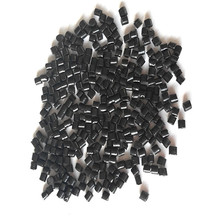您现在的位置是:半岛新闻网 > 资讯
Let’s not rebuild Notre Dame.
半岛新闻网2024-09-22 03:28:05【资讯】3人已围观
简介Recently in The World The Day Most Important to Understanding the Israel
Recently in The World
- The Day Most Important to Understanding the Israel-Palestine Conflict Is Here
- I Study Famine. The Conversation About Gaza Has Been Very Confused.
- The Iran Strikes and World Central Kitchen Deaths Have Felt Like Turning Points—in America. In Israel …
- Putin Is Not Going to Let a Crisis Like This Go to Waste
This story was originally published by Slate.fr. It was translated by Henry Grabar and Margaret Grabar Sage.
“Notre Drame,” read the excellent front page of the Libération newspaper the day after the fire, displaying the spire of our national cathedral ablaze, tottering, and on the brink of yielding. The drame, or tragedy, of all Parisians and all the French: mine, yours too no doubt, the tragedy of everyone who has the slightest affection for art, the Middle Ages, Esmeralda, Viollet-le-Duc, Jesus, Paris, tourist money, Catholic Mass, selfies in front of old stones, stained-glass windows, and gargoyles … in short,everyone’s tragedy, a tragedy by consensus.
On Monday night, I climbed up to Sacré-Cœur, I watched, and I cried. As a former medievalist, a Parisian in my bones, my own reasons were historic, cultural, and personal—and respectable, as respectable as yours, whatever they might be. Since the last embers were extinguished, I’ve heard the unanimous cry everywhere: Let’s rebuild!
Everyone agrees about that, not least the president of the republic. There’s no question Macron thinks he’s found a godsend to unify the country at a time of social crisis. Of course. Funds have been miraculously freed up; the ordeal of public financing put on hold thanks to the donations of fat cats*(with tax breaks priced in), thanks to the state, and soon thanks to the meager offerings of the little people who want, with a singular urge, for Notre Dame to be reborn from its ashes.
AdvertisementI won’t insult you by recounting the splendor of Notre Dame, it’s enough to read Hugo. (Incidentally, you have read Hugo, right? I did, a long time ago, and I remember suffering through entire pages of interminable descriptions of gargoyles before closing it with, paradoxically, the sensation of having received a marvelous aesthetic and literary gift. If Amazon’s to be believed, you definitely bought The Hunchback of Notre Dame on Tuesday, so steel yourself, don’t let it go: Sometimes it’s a pain in the ass with the details, but at the end you’ll be better for it. Anyway.)
Advertisement Advertisement AdvertisementNotre Dame, the religious, historic, literary work, is—was—splendid, and we mourn it. But is it dead, or is it a giant burn victim who will live on? What should we hope for it? Faced with the cries of the faithful and the atheists, this common prayer of resurrection, I feel suddenly alone in the desert in thinking: Let’s not rebuild Notre Dame.
AdvertisementOf course, it’s not a matter of destroying what remains. We must secure what the hellfire spared, make sure the church is safe and can be reopened to the people of Paris and everyone who comes to see it from around the world. But reconstruct it? No.
This religious monument, erected to the glory of God at a time when He was the alpha and the omega and the end logic behind each obscure phenomenon—birth, sickness, death, buboes, baldness, the whims of the weather, and crusades of all kinds—is in 2019 first and foremost a cultural and historic object whose beauty and persistence across the centuries are recognized as much by the Christians who kneel there as by members of other faiths or atheists amazed by its grace. From a strictly political point of view, since the French separation of church and state in 1905, Notre Dame must be considered a historic monument on the level of the Louvre or Versailles. It’s normal, then, for a reconstruction budget to be allocated to it. Yet it’s not only about the national budget: Our billionaires are emptying their coffers, the regional government has opened its purse strings, and individuals are invited to contribute via a great national fundraising project, which recalls the one that paid for the Sacré-Cœur (40 million francs, at the time, for a basilica whose erection was supposed to expiate the crimes of France after the Paris Commune of 1871).
Advertisement Advertisement AdvertisementReconstruct the cathedral, a religious and very Catholic symbol, with money from the state, from the powerful, and from the people? They’re telling me in my earpiece (and they will definitely tell me on social media) that I’m missing the point, it’s not thatNotre Dame we want to rebuild but the architectural masterpiece, the refuge of Quasimodo, the fight for the Liberation of Paris, the history of the Île de la Cité which must perpetuate itself and not change one iota as a result of this unfortunate spark. I understand, and an instinctive part of me approves of this approach, but no, it’s not a good idea. That monument burned. It no longer exists. And what we rebuild, identical or more likely with alterations made from safer, more modern materials, will only be a reproduction, a little like the caves at Lascaux, where only the replica is open to visits from the common folk.
Advertisement That’s why we all want to rebuild Notre Dame as if it had never fallen, as if the fire had never started.A cathedral is built for eternity. And now in France, the cathedral of all cathedrals collapses, or nearly. Now it abandons us, it leaves us, after more than eight centuries of existence and renovationsand glorious testament to our genius. The cathedral is eternal, but it was humans who raised it to the sky—and what humans! Our ancestors of the Middle Ages, who had only their strength and their intelligence to sculpt and construct. At the price of how many tears, lives, how much blood! (It’s the moment, if ever there was one, to (re)read the marvelous The Pillars of the Earth, by Ken Follett, which follows the construction of a cathedral in England.) So that we, the humans who built this thing, are through it made eternal too. The cathedral is the mirror of our eternity: It was there when we were born, it will be there when we die, and in it, we will live still.
Advertisement Advertisement Advertisement AdvertisementThe fire of April 15 confronts us with this intolerable fait accompli: There is no eternity. Not even, especially not, the one made by us and for us. Our forever-projects have caught fire, putting us face to face with our own imperfections and impermanence. This is what’s unbearable. We’re in mourning because we’ve lost a dear friend, and we’re passing into one of the first stages: denial. Why reconstruct Notre Dame? Because it was beauty, the symbol of the human aspiration to surpass ourselves and to create superb works in the service of big ideas? Or because it was, simply, a witness to our shared history?
But we still know how to create beauty, we know better than ever how to build monuments that reach for the sky where so many of us look for answers. We still have witnesses to our history, especially at the center of Paris. What’s unbearable is the disappearance, before our helpless eyes, of the certainty that we are immortal. That’s why we all want to rebuild Notre Dame as if it had never fallen, as if the fire had never started. It’s one of the few ways we feel we can repair what is ruined. We who are so powerless to repair the earth that degrades beneath our feet, we at least want to bring our panicked souls the consolation of saying that we’re still capable of creating an eternal form.
Advertisement AdvertisementWhat to do with the ruins? Strengthen the structure that still stands, protect it with a new roof, reopen the place while preserving what it’s become, and make of it a memento mori of the 21stcentury—why not? Just like we visit ruined castles, let’s visit Notre Dame and be conscious that with it, a part of our civilization has gone up in smoke; that this unfortunate fire is also an episode in our history, a page half-turned; that we must accept it, with its scars and its losses, because that’s what’s left.
And what would we do with the money? I may well be an atheist to the core, but I’m tempted to believe in miracles after seeing that Notre Dame has unearthed such a crazy sum in a country that’s officially so penniless. Nearly a billion euros, shaken loose in 24 hours from the wallets of the country’s richest families… Would it be so complicated to reorient such an offering to find a use that can benefit the greatest number of people?
*In the original, “marchands du temple,” in reference to the cleansing of the temple.
Tweet Share Share Comment很赞哦!(63588)
相关文章
- Unionized hospital workers pull out from strike
- Stephen King live
- 市政协机关开展“民法总则宣导”讲座
- US House passes resolution denouncing socialism, N. Korean dictators
- 夏凤俭与四川建安工业有限责任公司董事长耿海波座谈
- Doorbell camera records man confessing to murder, police say
- Woman captures perfect photo of a seagull brazenly stealing a lobster roll right out of her hand
- 'Big Mouth' made a great point with its 'Pen15' crossover
- 采购商+48,英德红茶在泉城济南蹭蹭涨粉
- The 15 best TV shows of 2020
热门文章
站长推荐

Cicadas love to land on people. Experts explain why.

There has been sharp rise in anti

US House passes resolution denouncing socialism, N. Korean dictators

快评丨奖励红娘600元,难破农村青年婚恋困局

雨城区疾控中心提示:科学补碘 防治碘缺乏病

Woman captures perfect photo of a seagull brazenly stealing a lobster roll right out of her hand

N. Korea lifts respiratory illness

快评丨奖励红娘600元,难破农村青年婚恋困局